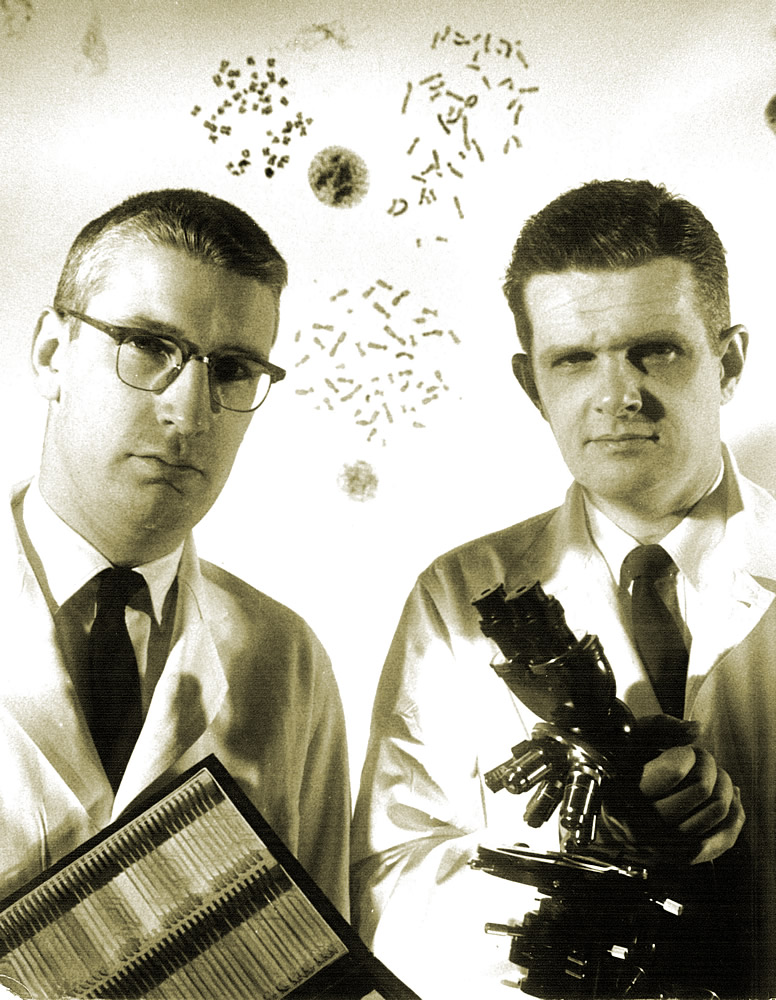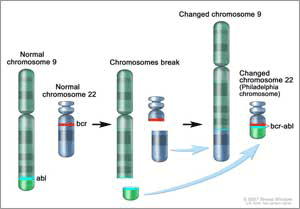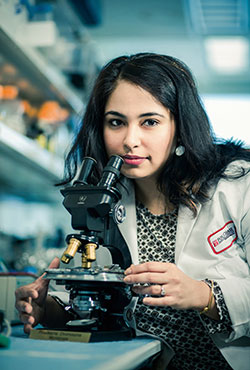History

The seminal discovery took place under a Fox Chase Cancer Center microscope in 1959, when David A. Hungerford, in collaboration with Peter C. Nowell, detected a tiny abnormality in the chromosomes from cultured blood cells taken from two patients with chronic myelogenous leukemia (CML). This chromosomal abnormality would later be known as the "Philadelphia Chromosome," the first consistent chromosome abnormality associated with neoplasia.
Hungerford, at the time of discovery, was a junior research fellow at Fox Chase, pursuing research toward a PhD at the University of Pennsylvania, which he was awarded in 1961. In collaboration with pathologist Peter C. Nowell of the university's medical school, Hungerford was studying leukemia cells for his doctoral dissertation on human chromosomes. At the time, techniques for preparing chromosomes for microscopic study were still crude. Past researchers had found no abnormal chromosomes in cells from patients with CML, so Hungerford and Nowell presented their new evidence cautiously, in the Journal of National Cancer Institute in 1960. Sure enough, further studies verified this landmark observation.
The original article of the Philadelphia Chromosome Discovery has been cited 1682 times since its publication in 1960.
Part of chromosome 22, and thus some of the genetic code it carried, appeared to be missing. With the advent of chromosome banding techniques in 1970, the abnormality proved to be an exchange, or translocation, of material between chromosomes 22 and 9 (seen in the photo below). The abnormally shortened chromosome was discovered by both Hungerford, of the Fox Chase Cancer Center, and Nowell of the University of Pennsylvania, and was therefore named the Philadelphia Chromosome after the city in which both institutions were located.
Science journalist Jessica Wapner brings this story vividly to life in her book, The Philadelphia Chromosome. From the book launch event at Fox Chase Cancer Center, May 14, 2013. (58:53)Future Implications of this Discovery

Janet D. Rowley made a series of discoveries about cytogenetic (or chromosome) changes in human leukemia and lymphoma. She discovered the existence of a translocation between chromosomes 9 and 22 in CML in 1973 and then identified a number of common translocations in other types of leukemia and lymphoma. Translocation is the process by which two chromosomes exchange material when both break. For their seminal discoveries on the genetic basis of neoplasia, Drs. Rowley and Nowell, along with Dr. Alfred G. Knudson of Fox Chase, would share the Lasker Award in 1998.
Brian J. Druker (Oregon Health & Science University), Nicholas B. Lydon (formerly at Novartis, now with Granite BioPharma), and Charles L. Sawyers (Memorial Sloan-Kettering Cancer Center) broke new ground in cancer therapy and radically altered the prognosis of CML patients through their clinical trial research and the eventual production of the groundbreaking cancer drugs, most notably, GLEEVEC®.
Druker, Lydon, and Sawyers seized upon the known molecular defect that underlies CML, formulated the idea of tackling this root cause of the disease, crafted a specific kinase inhibitor, and designed a second-generation inhibitor when drug resistance developed. Their work has provided a model that extends well beyond CML. Now, hundreds of drugs for cancer that target specific molecules are in development and dozens have been approved. Druker, Lydon, and Sawyers have provided a stunningly successful treatment for CML and a new paradigm for cancer therapy. For the development of molecularly-targeted treatments for CML, converting a fatal cancer into a manageable chronic condition, Druker, Lydon and Sawyers received the Lasker Award in 2009.
